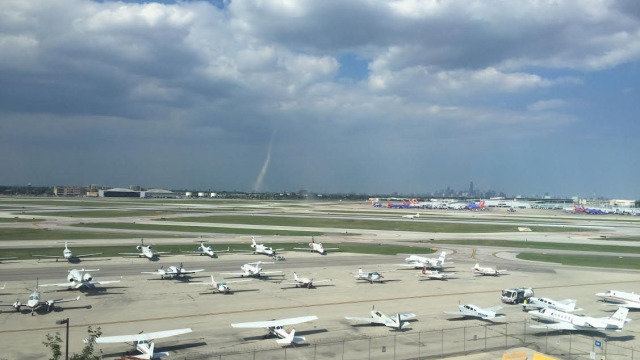
The bizarre, dusty funnel, known as a landspout, was visible from Chicago's Midway Airport just before 4 Thursday afternoon for about 10 minutes and was photographed by several commuters in Chicagoland.
According to the National Weather Service, the landspout touched down in about a two-block area on the city's near southwest side, south of Ogden Avenue. No damage was reported.
It could be seen from the top of Chicago's tallest skyscraper, the Willis Tower.
This was the first tornado of any kind in the city limits of Chicago since an F0 tornado downed trees and limbs on the Loyola University campus on Sept. 22, 2006, according to the National Weather Service.
From 1954-April 2016, there have been 54 tornadoes in Cook County, according to NOAA's Storm Events Database.
While a landspout is technically a tornado, it differs from what you may consider a tornado.
Landspouts don't need a parent thunderstorm with a rotating updraft. They form when a developing towering cumulus cloud occurs over any near-surface boundary of converging winds.
In Chicago's case, it was the lake-breeze boundary separating air cooled by Lake Michigan with easterly winds from hotter air over inland locations with winds blowing from the west or southwest.
The boundary, therefore, features very slowly rotating air. Once the growing cumulus cloud's upward motion passes over the boundary, that slowly rotating air becomes stretched vertically and accelerates into what became the landspout.
They are essentially waterspouts over land.
Most landspouts are fairly weak and short-lived. On occasion, they can do minor damage. They are most common in the High Plains, Colorado in particular.
One recent, photogenic landspout damaged a farm near Peetz, Colorado, in late May.



Reader Comments
to our Newsletter